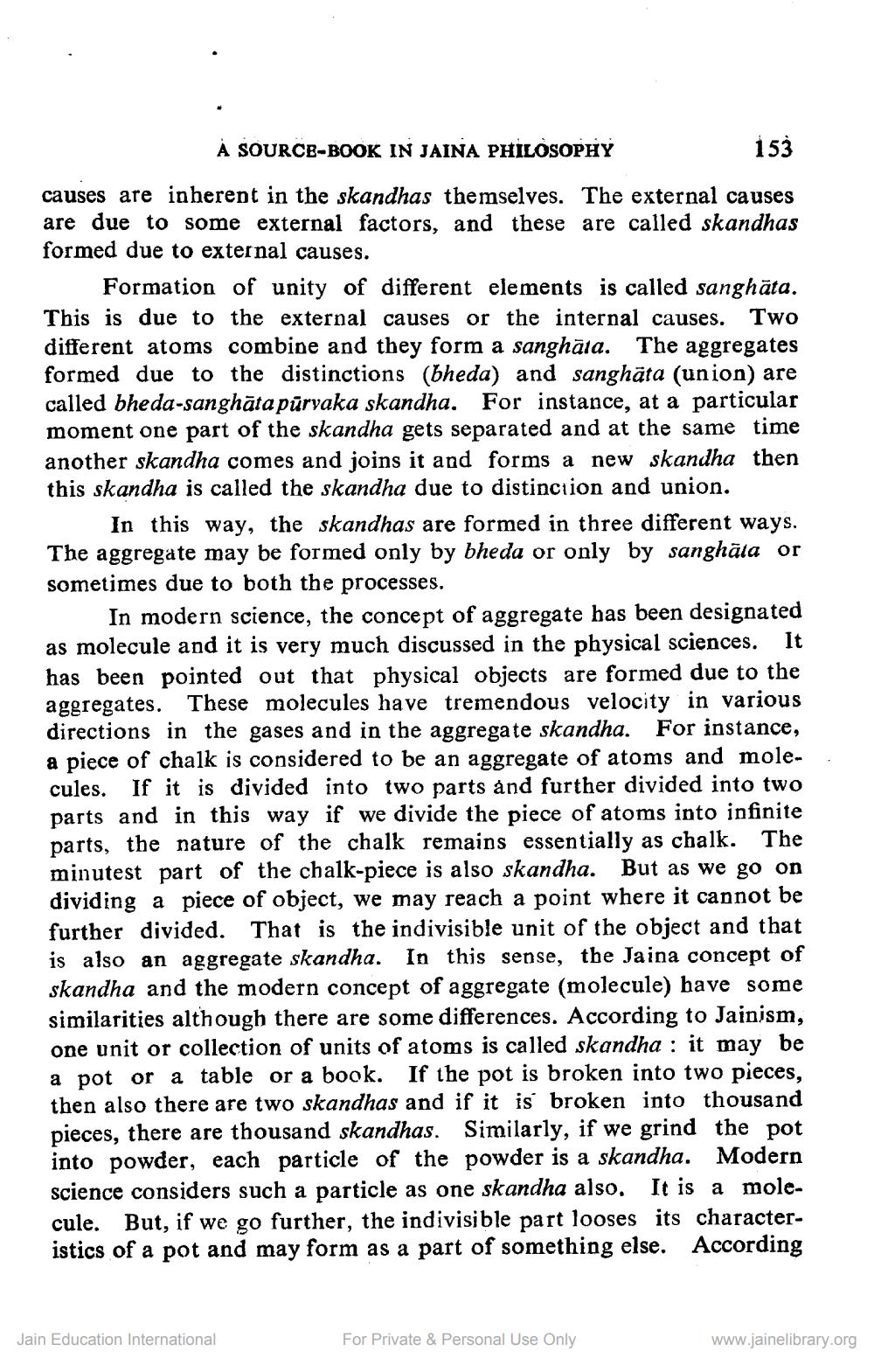________________
À SOURCE-BOOK IN JAINA PHILOSOPHY
153 causes are inherent in the skandhas themselves. The external causes are due to some external factors, and these are called skandhas formed due to external causes.
Formation of unity of different elements is called sanghäta. This is due to the external causes or the internal causes. Two different atoms combine and they form a sanghāta. The aggregates formed due to the distinctions (bheda) and sanghāta (union) are called bheda-sanghāta pūrvaka skandha. For instance, at a particular moment one part of the skandha gets separated and at the same time another skandha comes and joins it and forms a new skandha then this skandha is called the skandha due to distinction and union.
In this way, the skandhas are formed in three different ways. The aggregate may be formed only by bheda or only by sanghāta or sometimes due to both the processes.
In modern science, the concept of aggregate has been designated as molecule and it is very much discussed in the physical sciences. It has been pointed out that physical objects are formed due to the aggregates. These molecules have tremendous velocity in various directions in the gases and in the aggregate skandha. For instance, a piece of chalk is considered to be an aggregate of atoms and molecules. If it is divided into two parts and further divided into two parts and in this way if we divide the piece of atoms into infinite parts, the nature of the chalk remains essentially as chalk. The minutest part of the chalk-piece is also skandha. But as we go on dividing a piece of object, we may reach a point where it cannot be further divided. That is the indivisible unit of the object and that is also an aggregate skandha. In this sense, the Jaina concept of skandha and the modern concept of aggregate (molecule) have some similarities although there are some differences. According to Jainism, one unit or collection of units of atoms is called skandha : it may be a pot or a table or a book. If the pot is broken into two pieces, then also there are two skandhas and if it is broken into thousand pieces, there are thousand skandhas. Similarly, if we grind the pot into powder, each particle of the powder is a skandha. Modern science considers such a particle as one skandha also, It is a molecule. But, if we go further, the indivisible part looses its characteristics of a pot and may form as a part of something else. According
Jain Education International
For Private & Personal Use Only
www.jainelibrary.org




